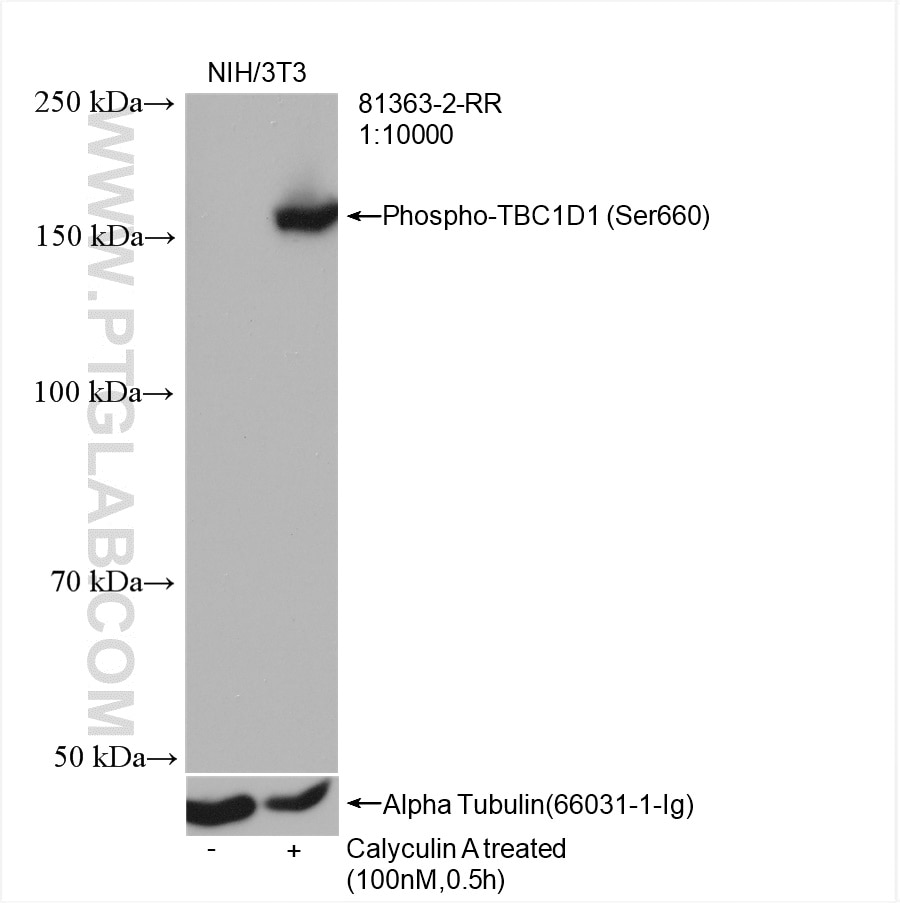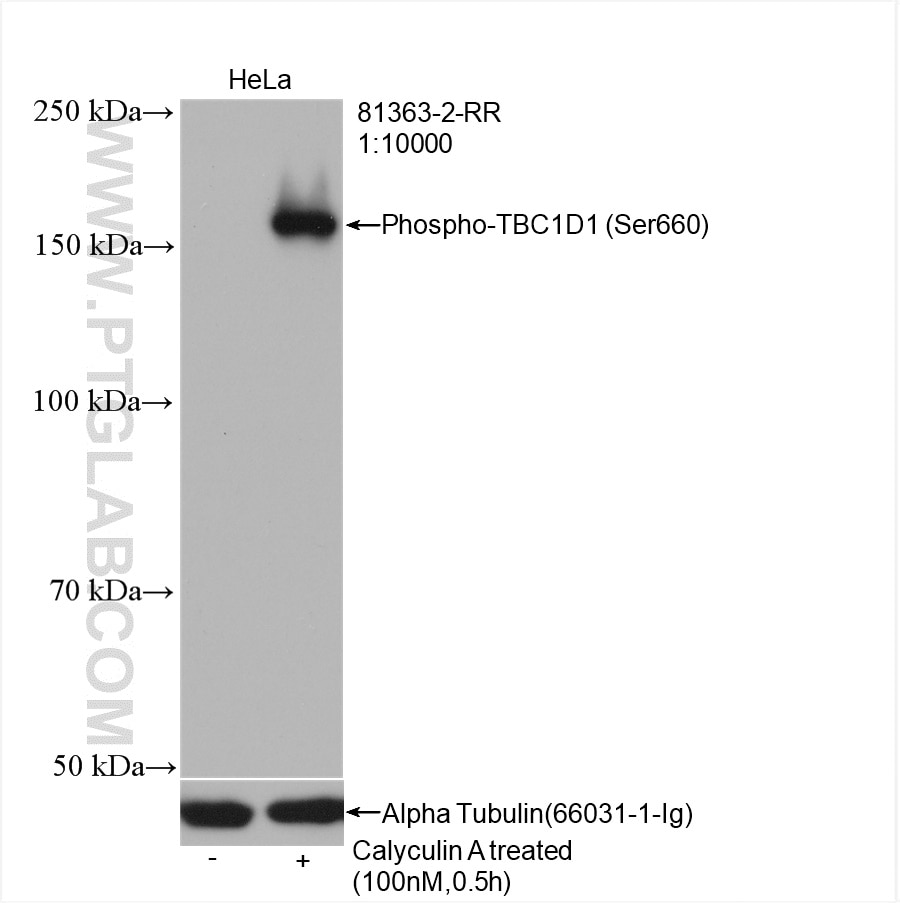Phospho-TBC1D1 (Ser660) Recombinant antibody
Phospho-TBC1D1 (Ser660) Recombinant Antibody for WB, ELISA
Host / Isotype
Rabbit / IgG
Reactivity
Human, mouse
Applications
WB, ELISA
Conjugate
Unconjugated
CloneNo.
7N19
Cat no : 81363-2-RR
Synonyms
Validation Data Gallery
Tested Applications
| Positive WB detected in | Calyculin A treated NIH/3T3 cells, Calyculin A treated HeLa cells |
Recommended dilution
| Application | Dilution |
|---|---|
| Western Blot (WB) | WB : 1:5000-1:50000 |
| Sample-dependent, check data in validation data gallery | |
Product Information
81363-2-RR targets Phospho-TBC1D1 (Ser660) in WB, ELISA applications and shows reactivity with Human, mouse samples.
| Tested Reactivity | Human, mouse |
| Host / Isotype | Rabbit / IgG |
| Class | Recombinant |
| Type | Antibody |
| Immunogen | Peptide 相同性解析による交差性が予測される生物種 |
| Full Name | TBC1 (tre-2/USP6, BUB2, cdc16) domain family, member 1 |
| Calculated molecular weight | 133 kDa |
| Observed molecular weight | 160 kDa |
| GenBank accession number | BC050321 |
| Gene symbol | TBC1D1 |
| Gene ID (NCBI) | 23216 |
| Conjugate | Unconjugated |
| Form | Liquid |
| Purification Method | Protein A purification |
| Storage Buffer | PBS with 0.02% sodium azide and 50% glycerol pH 7.3. |
| Storage Conditions | Store at -20°C. Stable for one year after shipment. Aliquoting is unnecessary for -20oC storage. |
Background Information
TBC1D1 belong to the family of RabGAPs and its physiological roles in glucose homeostasis and its implication in human diseases have already been characterized in skeletal muscle and adipocytes in a large number of independent studies. TBC1D1 including twophospho-tyrosine-binding (PTB) domains, a calmodulin-binding domain(CBD) and the func-tional GAP domain responsible for catalyzing GTP hydrolysis. TBC1D1 is phosphorylated by AMPK at Ser660 and Thr237, and by AKT at Thr596. The RabGAPs TBC1D1 is important regulators of glucose homeostasis inskeletal muscle and adipose tissue. (PMID: 31627187, PMID: 18477703)
Protocols
| Product Specific Protocols | |
|---|---|
| WB protocol for Phospho-TBC1D1 (Ser660) antibody 81363-2-RR | Download protocol |
| Standard Protocols | |
|---|---|
| Click here to view our Standard Protocols |



